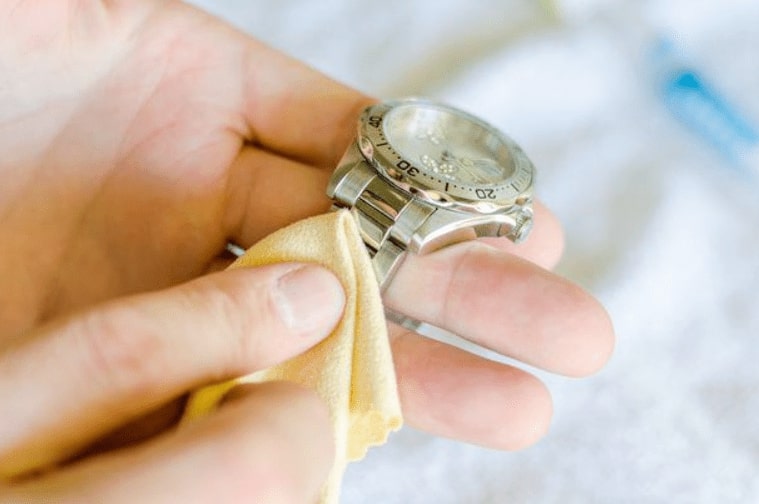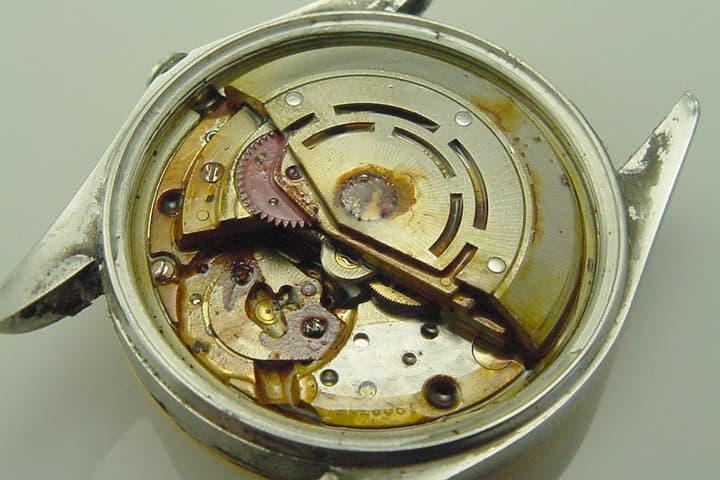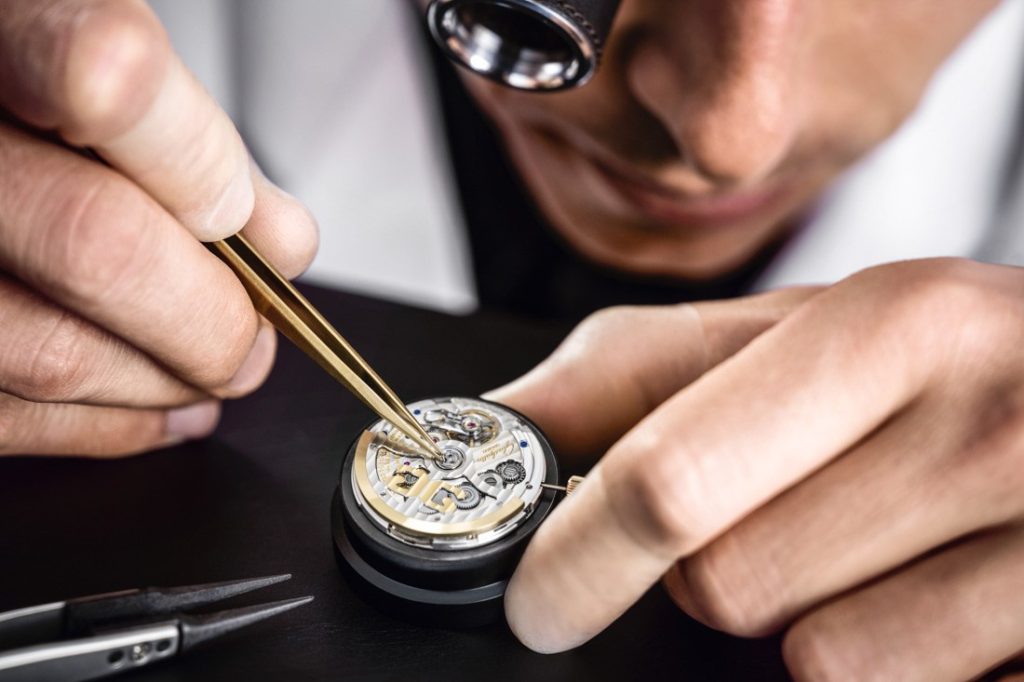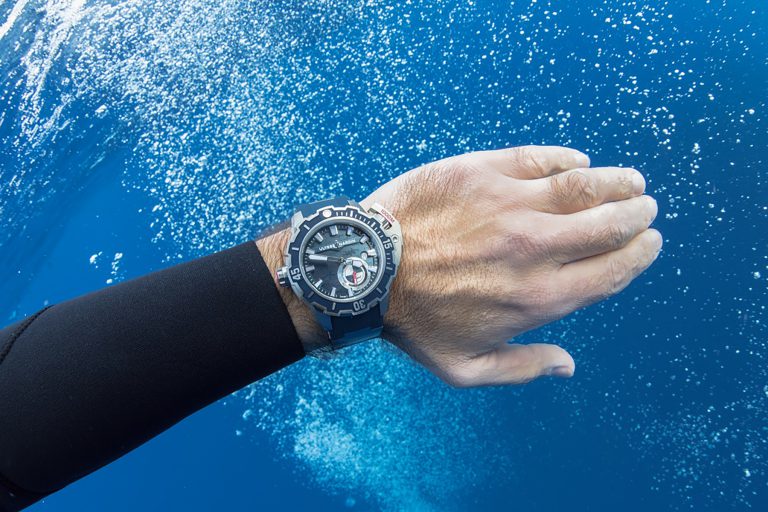Blog Replica Watches
What To Do When The Watch Gets Into Water? Simple Treatment
During usage, exposing a wristwatch to water can have an impact on its accuracy and lifespan. To address this situation, here are some suggestions from DWatch Luxury on how to deal with a water-damaged or water-absorbed watch at home:

Learn the water resistance rating of the watch
The Water Resistance (WR) rating indicates the watch’s ability to withstand water. This rating is determined through various water pressure and depth tests conducted in a laboratory.
There are common symbols used to represent the water resistance rating on watches:
WR: This rating is used by many watch manufacturers to measure in meters. For example, WR 30 means that the watch is capable of withstanding water pressure at a depth of 30m.
BAR: This unit is popular in Europe and is used to measure water pressure. 1 BAR is equivalent to the watch’s stable operation at a depth of 10m.
ATM: This unit is widely used globally. For example, 1 ATM is approximately equal to 1 BAR, and the watch can withstand water pressure at a depth of around 10m.
Signs of a water-damaged watch Here are some indications that the watch has come into contact with water:
Water vapor condenses and forms small droplets on the watch’s surface. Water sound can be heard inside the watch. Water leaks out when you shake the watch, even though it appears dry. The watch operates slower and stops. Rust or discoloration appears on the metal components of the watch.

Causes of water absorption in watches
Here are 5 common causes that lead to water exposure in watches:
Improperly closed crown or adjustment mechanism when the watch comes into contact with water. This allows water to easily penetrate through gaps and the adjustment mechanism, compromising the water resistance designed for the watch.
View more:
Changes in the ambient temperature surrounding the watch can cause the moisture in the air to come into contact with the watch. Additionally, prolonged exposure to high temperatures can affect the internal components of the watch, reducing its water resistance.
Exposure to chemicals, alkaline solutions, saltwater, or sweat can cause corrosion and rust on the watch.
Strong impacts or collisions of the watch against hard objects such as walls or tables can create cracks, allowing water to penetrate the watch through these openings and causing water absorption.
If your watch has been exposed to water, take immediate measures such as drying the surface, placing the watch in a dry and well-ventilated area, and then checking the crown and functions of the watch. If the situation does not improve or the watch is damaged, bring it to an authorized service center or a reputable watch store for repair.

Here are 6 proper and effective ways to handle a water-damaged watch:
- Place the watch in a rice container or use desiccant packs:
- Place the watch in a container filled with rice to absorb moisture.
- Wrap the watch in a paper towel to protect it from dust and place it in the rice container.
- Use desiccant packs around the watch to address the situation.
- Note that this method takes time and may affect the movement.
- Wipe the water inside the watch with a paper towel or soft cloth:
- Use a paper towel or soft cloth to dry the watch’s surface.
- Wrap a dry paper towel around the watch to absorb moisture.
- Note that this method is not suitable when the watch has been heavily exposed to water.
- Wear the water-damaged watch upside down:
- Turn the watch face down and wear it on your wrist.
- This principle relies on temperature effects, as the increased temperature of your wrist causes the water to evaporate and condense on the upper side.
- However, this method is not suitable when the watch has been exposed to heavy water and can potentially damage other components.
- Use a hairdryer:
- Use a hairdryer to heat the watch’s surface and encourage water evaporation.
- Ensure proper temperature adjustment and distance to avoid impacting other watch components.
- Place the watch under a desk lamp:
- Place the watch under a desk lamp to increase the temperature and facilitate water evaporation.
- Note that it’s not guaranteed that all moisture will completely evaporate, and high temperature can potentially damage internal components.
- Take the watch to a service center:
- In case of severe water exposure, bring the watch to the nearest service center to address the issue.
- The above methods only partially address the situation. If the problem is more severe, leading to potential damage, it’s necessary to seek professional help at a service center.

Note the following to prevent water exposure to the watch:
- Use a watch corresponding to the manufacturer’s recommended water resistance rating.
- Choose a watch with a water resistance rating of 5 ATM or higher to ensure usability in heavy rain or while swimming without worrying about water exposure.
- Avoid adjusting the watch in unusual temperatures or underwater. Make sure the crown and case back are tightly screwed before water contact.
- Regularly check the water resistance rating and dry the watch to prevent unnoticed water exposure.
- Avoid overtightening the crown in the wrong direction to prevent damaging the watch’s stem. If the watch experiences severe impact resulting in damage to the case back, crown, or cracked crystal, take it to a repair center for immediate replacement.







